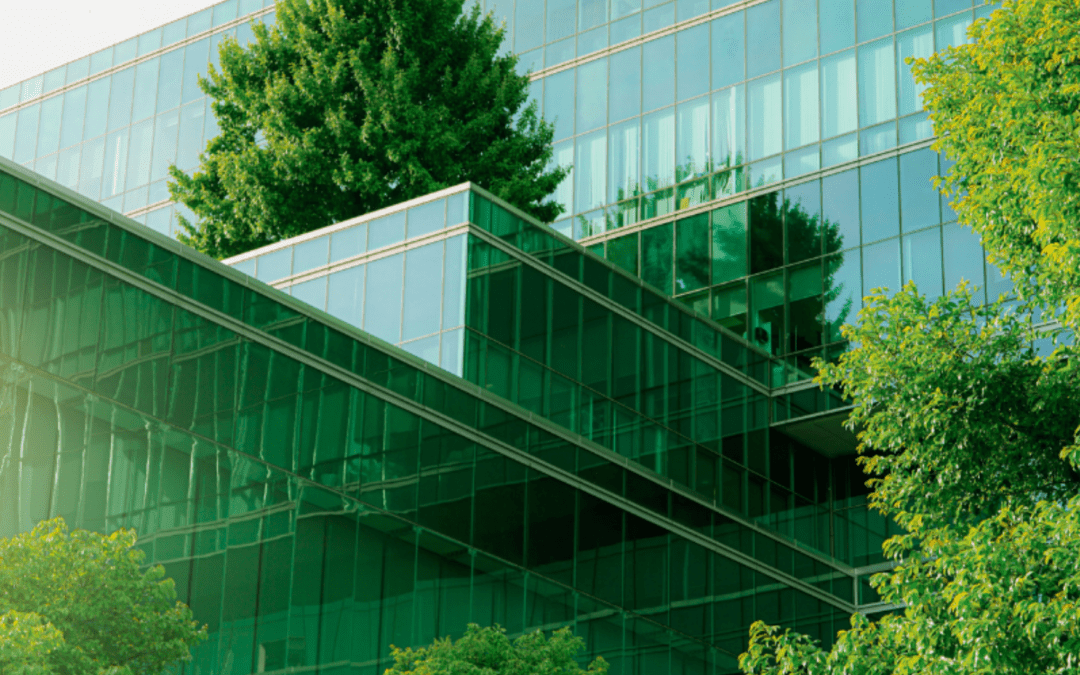INTRODUCTION:

A green or sustainable building is a construction that can maintain or improve the quality of life in its environment due to its construction and features. Green or sustainable buildings aim to create healthier, energy-efficient, and eco-friendly structures. Compared to standard buildings, they use less energy, water, and natural resources, generate less waste, and provide a healthier environment for occupants.
GOALS OF GREEN PROJECTS:

The goals of green buildings are to reduce the overall impact of the built environment on human health and the natural environment. This is achieved by efficiently using energy, water, and other resources, protecting occupant health, improving employee productivity, and reducing waste, pollution, and environmental degradation. Green building aims to sustain the environment without disrupting the natural habitats surrounding the construction site, as even minor disturbances can have a ripple effect on wildlife and the environment.
BENEFITS OF GREEN BUILDING:

Green building offers a range of benefits, including environmental, economic, and social advantages. By adopting greener practices, we can maximize environmental and economic performance. Some key benefits of green building are:
- Reduces Wastage of Water and Energy
- Conserves Natural Resources
- Improves Air and Water Quality
- Protects Biodiversity and Ecosystems
- Reduces Costs and Increases Value
- Improves Occupant Productivity
- Creates a Market for Green Products and Services
- Improves the Quality of Life
- Minimizes Strain on Local Infrastructure
MEP STRATEGIES FOR ECO BUILDING DESIGN:

Contemporary building services design, also known as MEP engineering design, must prioritize sustainability as an integral part of its plan. The focus is on minimizing environmental impact and maximizing human comfort. Governments at the national and state levels are implementing regulations on water management and energy efficiency, encouraging construction that incorporates natural alternatives for energy and comfort, sustainable materials, and optimal maintenance methods. Some MEP strategies for eco-building design include:
- Lowering Energy Consumption
- Practicing Water Management
- Exploring Energy Alternatives
- Utilizing Sustainable Building Practices & Materials
- Planning for Easy Maintenance & Enduring Building Life
ENERGY USE AND CONSUMPTION BY THE BUILDING SECTOR:

According to the Environmental Protection Agency (EPA), the building sector in the US accounts for the following energy use and consumption statistics:
- 39% of total energy use
- 12% of total water consumption
- 68% of total electricity consumption
- 38% of carbon dioxide emissions
These figures highlight the urgent need for improving construction quality due to the significant impact on the natural environment, human health, and the global economy. Sustainable development maximizes a building’s environmental performance and provides cost savings to the owner.
Brunswick Engineering, a company registered in the states of NJ, NY & PA, offers Mechanical, Electrical, Plumbing & Fire Protection Engineering design services to both the public and private sectors. With a team of Registered Professional Engineers, LEED Accredited Professionals, Design Engineers, and CAD Draftsmen/Technicians, Brunswick Engineering is committed to delivering high-quality MEP services in line with sustainable building practices.

